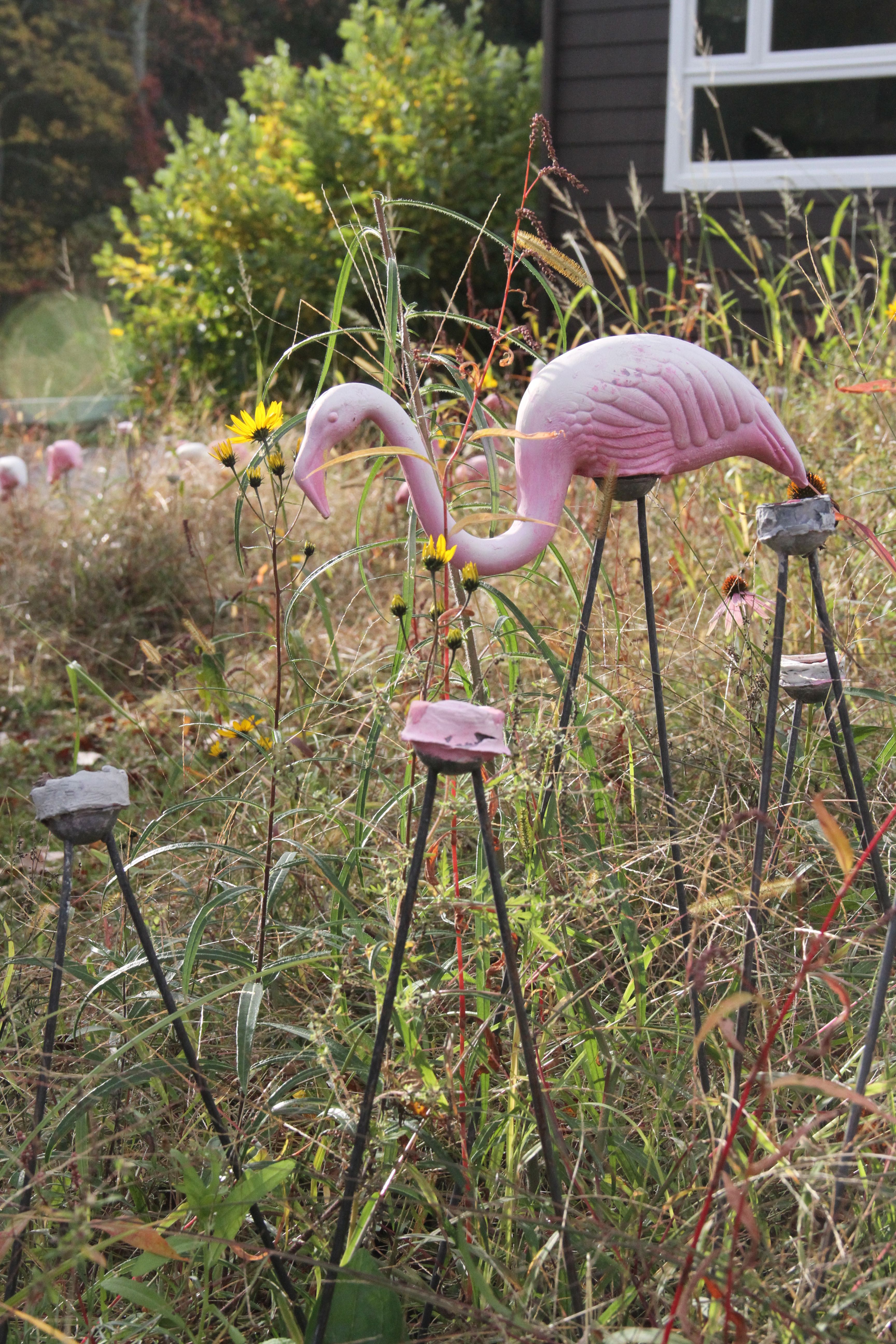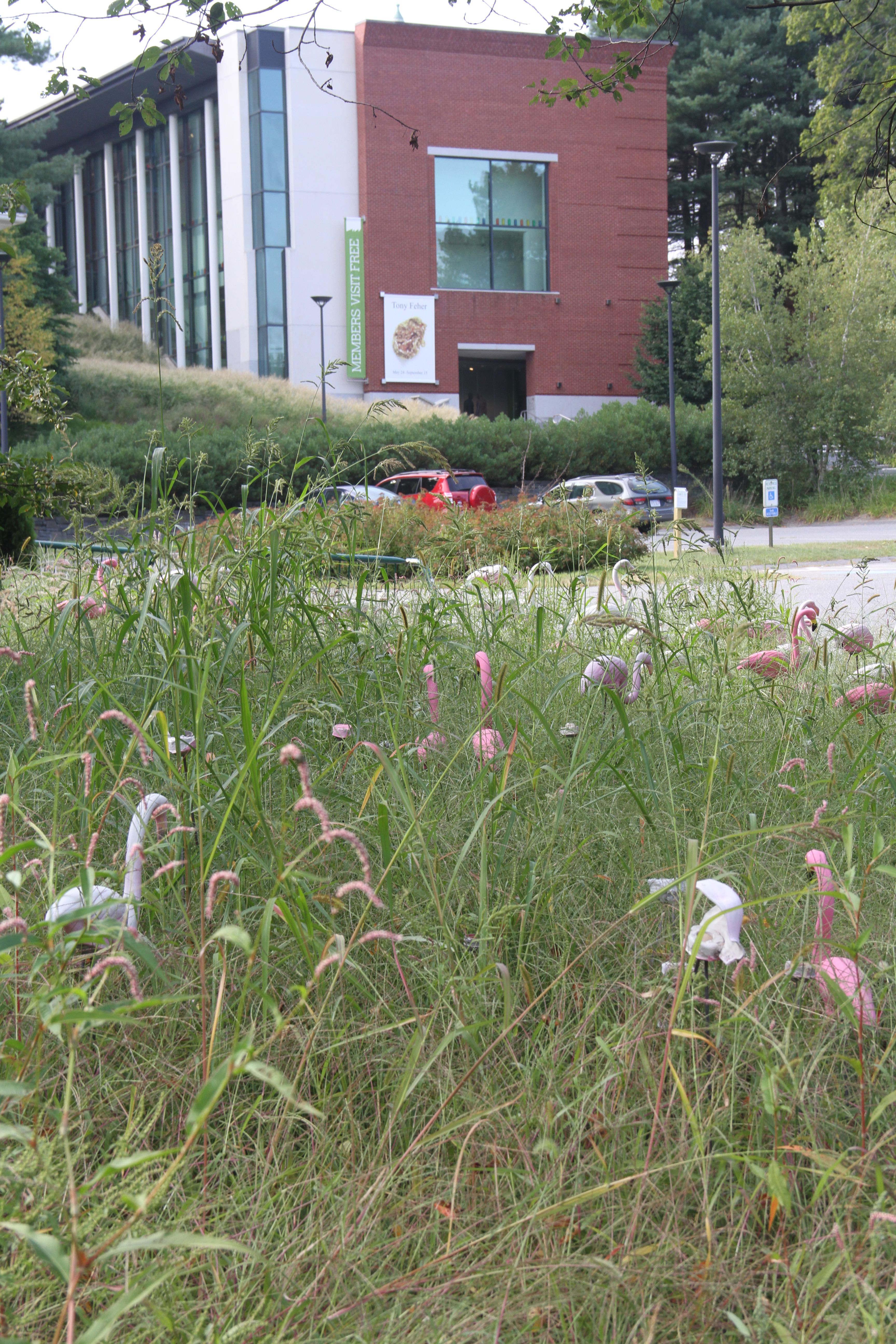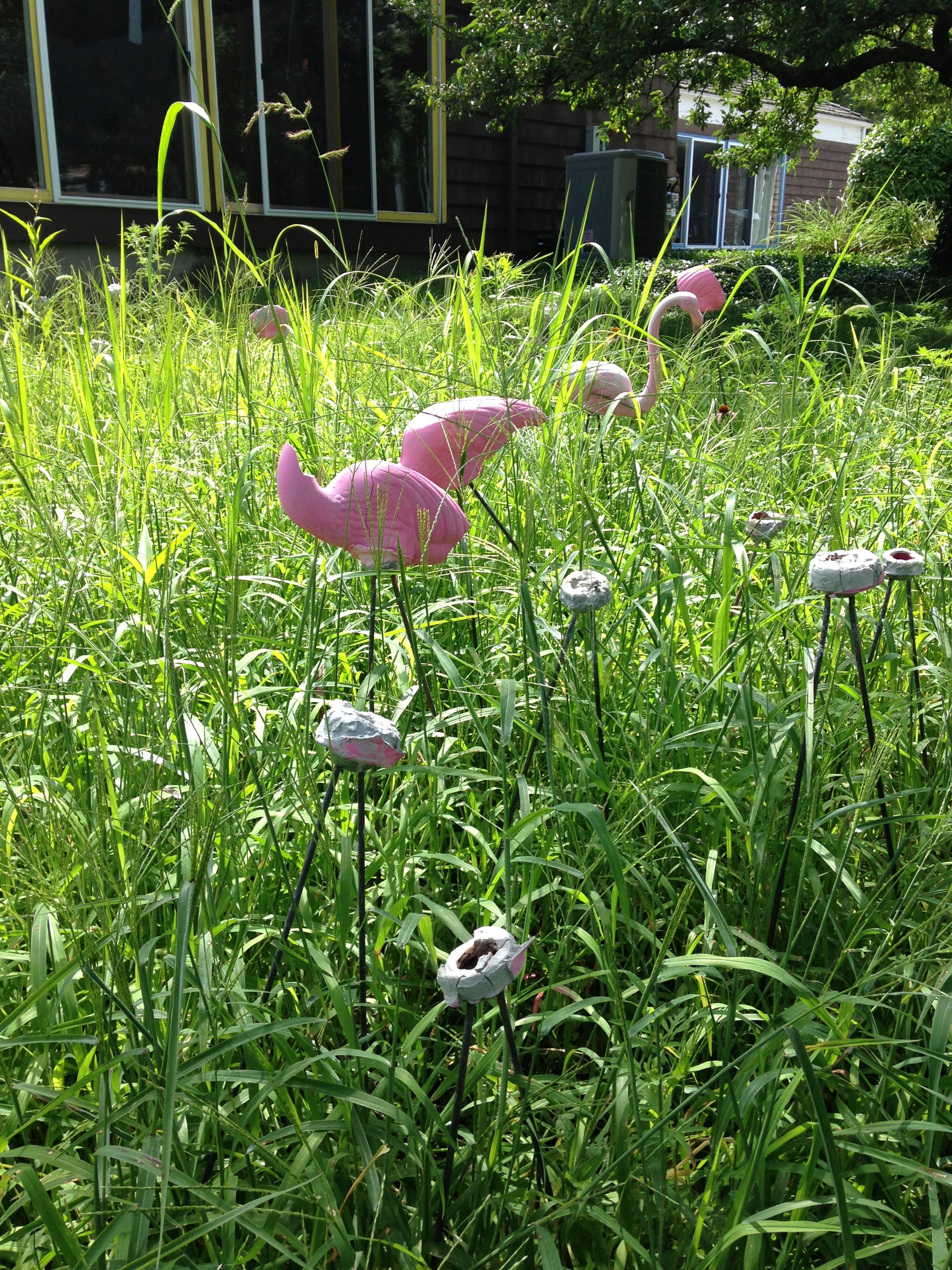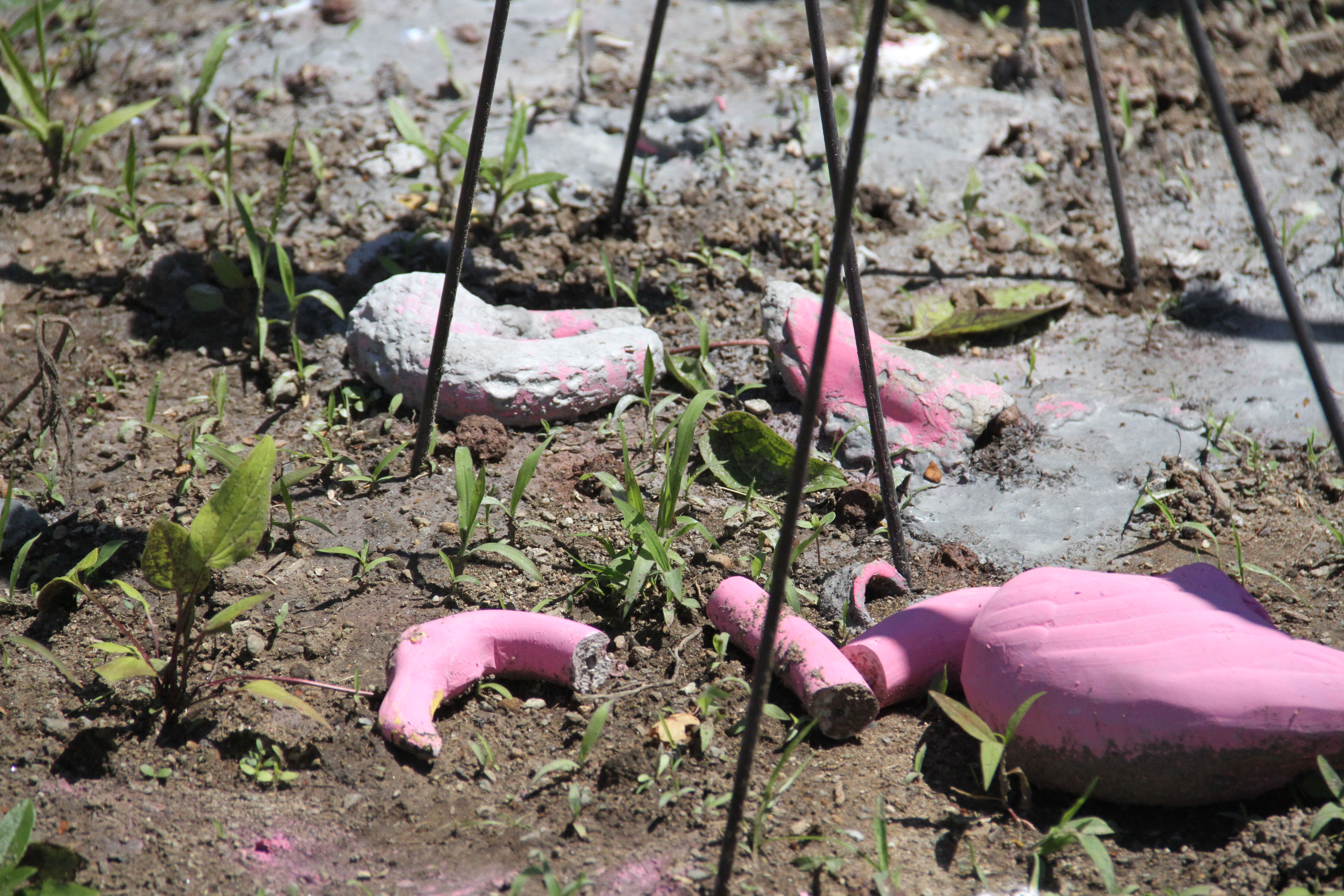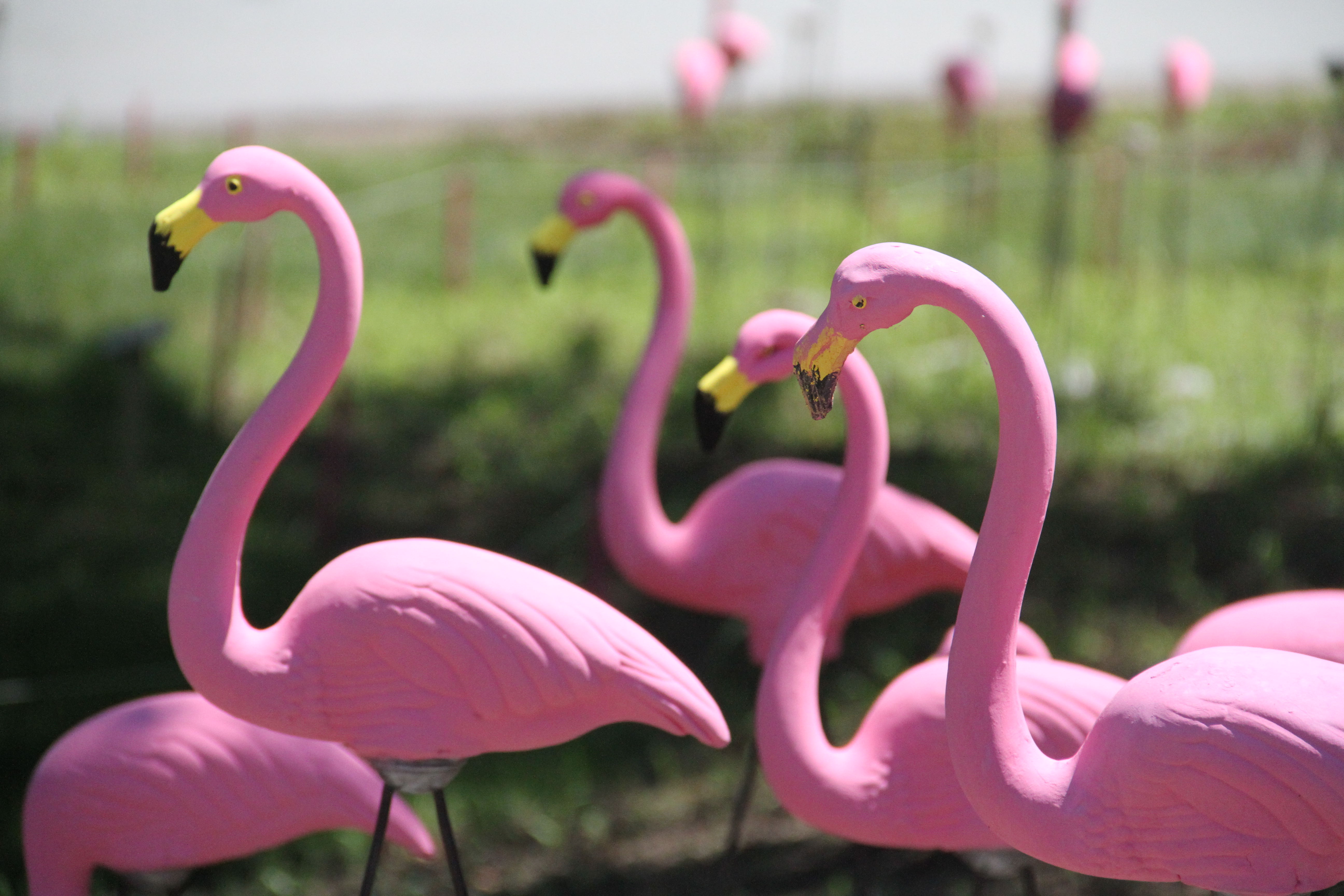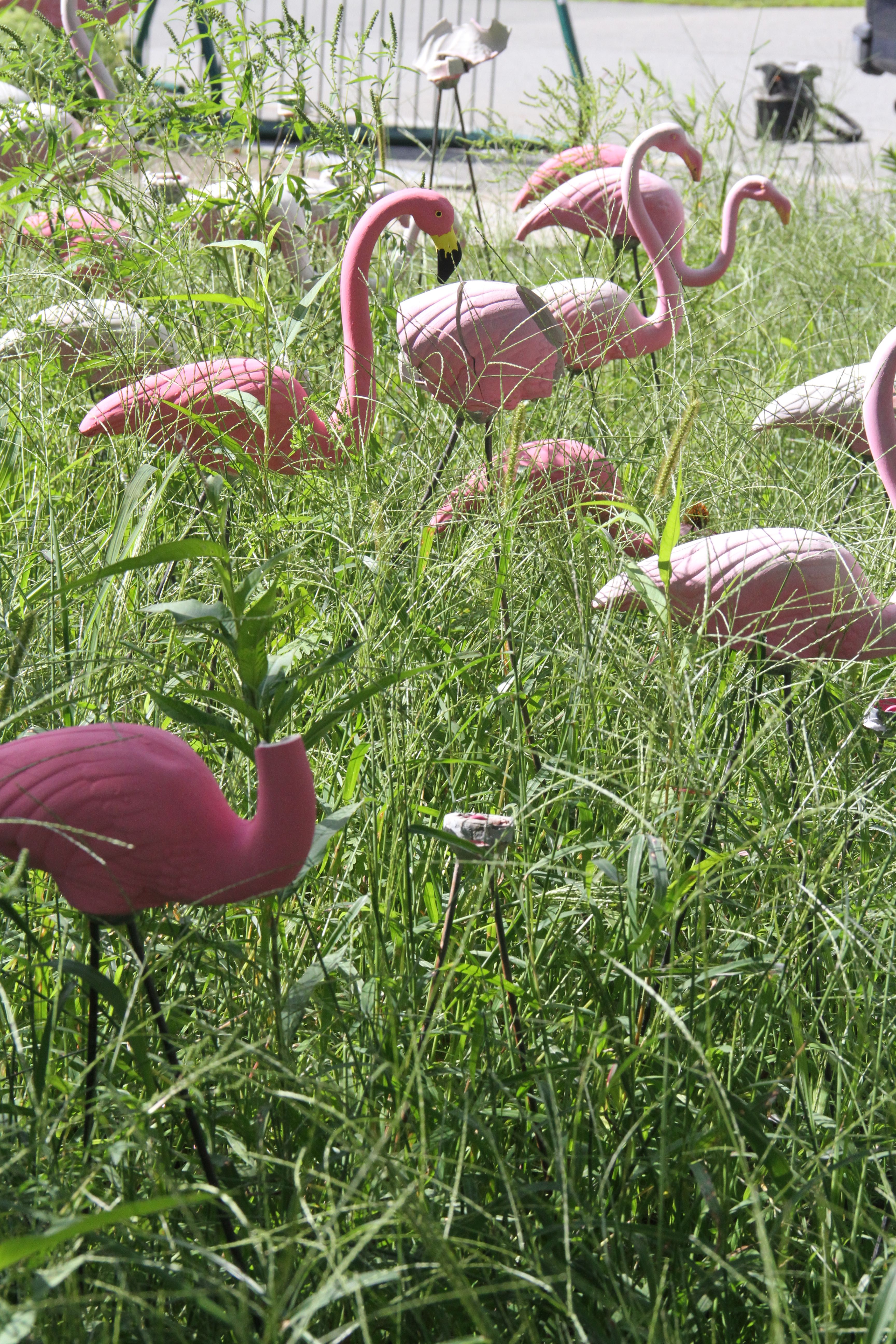Assisted Flagration
A Time-based, Installation Intervention, 2013
The Decordova Museum and Sculpture Park, Lincoln,MA
Assisted Flagration is a temporary, time-based intervention into the DeCordova Museum and Sculpture Park on view in the exhibition Work Out at the DeCordova Sculpture Park and Museum on view from June – October, 2013. Comprised of numerous hand-made, seed-spreading, lawn ornament sculptures installed throughout the park, this piece examines the question of migration, preservation and the future of “native” and “local” species in the face of climate change.
The installation involves the placement of approximately 300 handmade biodegradable pink flamingo lawn ornaments throughout the DeCordova Sculpture Park. The pieces are biodegradable; with the wind and the rain they will break down, disappear, and plant seeds of 10 species of wildflowers local to North and South Carolina and not found naturally in New England. The seeds are:
Maximillian Sunflower (Helianthus maximilianii)
Spotted Beebalm (Monarda punctata)
Butterfly Weed (Asclepias tuberosa)
Little Bluestem (Schizachyrium scoparium)
Purple Coneflower (Echinacea purpurea)
Tickseed Sunflower (Bidens aristosa)
Button Snakeroot (Eryngium yuccifolium)
Inland Wood Oats (Chasmanthium latifolium (Michx.)
Fringed Phacelia (Phacelia fimbriata (Michx.)
Swamp Sunflower (Helianthus angustifolius)
Indian Blanket (Gaillardia Pulchella)
These plants were hand selected under the advice of a nursery that specializes in local plants in North Carolina. Concerned about the question of invasive species, I consulted closely with a botanist local to eastern Massachusetts to ensure that all seeds used in this project would not currently be able to winter over.
Why these plants?
Some climate scientists suggest that a possible future scenario for Massachusetts places our climate at that of North or South Carolina by the year 2060. This is a worst case scenario according to some, a likely scenario according to others. Selecting plants from North and South Carolina, I am planting a garden that is a speculative fiction: the image of a landscape that is not yet, but that could be. The flamingos are out of place harbingers that, in the style of trojan horses, carry within them seeds that could survive and thrive in Massachusetts in this future climate scenario.
The project draws on the vocabulary of Assisted Migration, a practice where species are transported to habitats that people speculate could be better suited to them in the long range (warming) future. This is a controversial technique, full of uncertainty and debate about natives and invasives and the question of belonging. I am drawn to this vocabulary – to the controversy and the way it puts the fact of “nativeness” into question.
In this way, the piece is question-asking mechanism about how the world we see around us now could be starkly different from the one that is to come. What do we do about the difference between the two? How do we think about protection and conservation in the face of inevitable and alarmingly rapid change? How do we, as potential gardeners of the world, hold all of the uncertainty when it comes to the future, and yet create the world that we want to see?
Why pink flamingos?
One could say that pink flamingo lawn ornaments are the original lawn sculpture, thus, a perfect gesture for a museum sculpture park lawn. These lawn ornaments are pink, they’re flagrant. And in this project, they’re flagrantly migrating seeds as a way to discuss climate change. I call this “flagration”.
Many things are being “flagrated” by this piece: the question of conservation – what should be done; what could be done; why. I’m using flagrant imagery and echoing a flagrant conservation technique
to draw attention to the complexity of an intense question: how to conserve and protect our environment in the face of a rapidly changing climate, a future that is different from any that our species and others has known.
And of course, the DeCordova lawn is being flagrated; as a site for flamingo-fueled flagrant migration, the “tacky” and decomposing lawn ornament forms are intervening into its cultivated, controlled space. In addition, the idea of a lawn as a valuable tastemaker is being flagrated by posing it as a site that can shepherd, in an unruly and uncontrolled way, the migration and cultivation of out-of-place plants that may be very much “local” to the area in the near or the long range future.
Read a review of Assisted Flagration, “WORK OUT at the deCordova: considering politics and individual agency” by Stephanie Cardon, published on September 16th, 2013.



